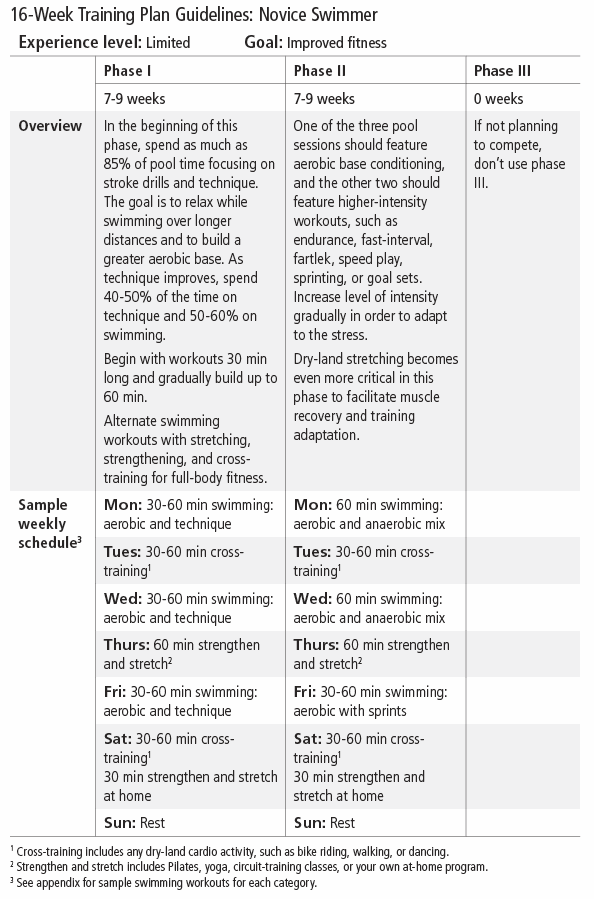Tips for structuring a swim training plan
This is an excerpt from Mastering Swimming eBook by Jim Montgomery & Mo Chambers.
When structuring your training plan, first determine the length of the program and then divide the time into three phases. The number of weeks that you spend on the various training phases depends on several factors, including swimming experience, initial fitness level, age, specific event (distance, sprint, open-water, triathlon), and the total length of the training plan.
Next, you prepare weekly workout schedules within each phase of training. If you have many things to juggle each week, you might not know when to schedule specific workouts. The following guidelines for smart weekly scheduling can simplify this piece of the planning:
- Swim three or four workouts each week. Three or four swimming workouts per week are ideal if you're very busy and are seeking a healthy variety in training. Swimmers who do fewer than three pool workouts each week find it difficult, if not impossible, to improve. More than four weekly workouts are recommended only if you're preparing for long events.
- Alternate types of workouts. If possible, schedule similar workouts several days apart to allow your body time to recover. Separate your swimming and cross-training workouts with one or two days and your strength training workouts with two or more days.
Furthermore, alternate the intensity of your workouts. For example, follow a rigorous cross-training day with a low-intensity workout day, such as swimming or stretching. Likewise, follow a high-intensity swim with a more relaxed activity.
- Prioritize your swimming. Most masters swim programs publish their daily and weekly workout schedules to designate what type of training swimmers can expect on any given day. This menu of workouts can help you create your own weekly plan. Select three or four workouts that fit your goals, write them into your plan, and schedule your dry-land training on alternating days.
- Rest. Schedule one full day of rest in your week to let your body recover. If you are not comfortable with a day of inactivity, schedule one day in your week with a light activity such as stretching, a yoga class, or easy cross-training.
The following four tables, each based on a 16-week training plan, provide guidelines for modifying the length and focus of each training phase for various types of swimmers. The sample schedules depict a typical week for each phase. As you sketch out your plan, remember that there is not a universal training plan. Your plan will be uniquely yours, designed to match your schedule and your life.

SHOP

Get the latest insights with regular newsletters, plus periodic product information and special insider offers.
JOIN NOW
Latest Posts
- Outdoor recreation and adventure activities lead to positive health outcomes for children
- Schools offer a wide variety of adventure programs for children
- Using sport to change society
- Despite progress, equity remains a pressing challenge for women in sport
- What today’s athletes expect from coaches
- Barriers to youth participation in physical activity and sport


